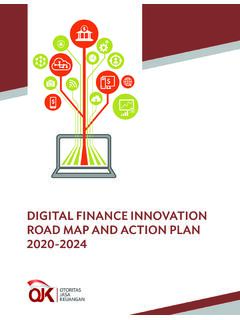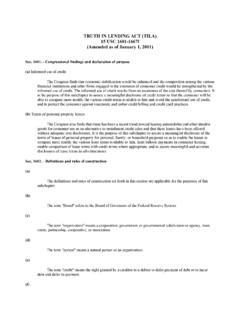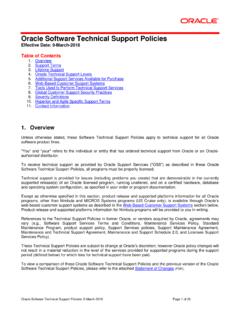Transcription of Coronavirus (COVID-19): personal protective equipment …
1 covid -19: personal protective equipment (PPE) plan Published 10 April 2020 This document has been replaced by a newer version. Go to: protective equipment Strategy 1 Contents Foreword by the Secretary of State for Health and Social Care .. 3 Strand 1 - Guidance .. 5 PPE in health and care settings .. 5 PPE in non-health and non-care settings .. 10 Strand 2 - Delivery .. 12 Supplying PPE to NHS Trusts .. 14 Supplying PPE to primary care providers and pharmacies .. 14 Supplying PPE to social care providers .. 14 Mobilising the National Supply Disruption Response .. 15 Distributing PPE to Local Resilience Forums .. 16 A new website for ordering PPE .. 17 Taking a UK-wide approach .. 17 Supplying PPE to other sectors responding to the covid -19 outbreak.
2 18 Funding our supply .. 19 Measuring progress .. 19 Strand 3 - Future Supply .. 20 Buying more PPE .. 20 Business lending a hand .. 21 Unleashing the potential of industry to make more PPE a call to action .. 21 2 personal protective equipment Strategy 3 Foreword by the Secretary of State for Health and Social Care NHS and care staff protect us. Every day, while we re safe at home, they go off to work to care for us. We owe it to them to get them the kit they need to protect themselves. The goal I ve set is that everyone should get the personal protective equipment (PPE) they need. To achieve that we ve got to overcome a huge number of complex challenges. This plan sets out how. Global demand for this equipment is at unprecedented levels and several countries have placed export bans on the sale of PPE.
3 While we entered the crisis with a stockpile designed to respond to an outbreak of pandemic influenza and a no-deal Brexit, our supply chain for PPE was designed to accommodate delivering to 226 NHS Trusts. As of this week, we are now providing essential PPE supplies to 58,000 different providers including care homes, GP surgeries, hospices and community care organisations. We also went into this crisis without a large-scale domestic PPE manufacturing industry to draw on. None of these challenges are insurmountable and since the start of the crisis all four governments of the UK have been working around the clock to get a national PPE distribution network up and running. This has already delivered hundreds of millions of items to the frontline and we re constantly ramping up further.
4 Our PPE plan has three strands: guidance, distribution and future supply. Strand one is about being clear who needs PPE, what type and in what circumstances. There is enough PPE to go around, but it s a precious resource and must be used only where there is a clinical need to do so. Our guidance states that any clinician or care professional working within two metres of a confirmed or suspected covid -19 patient should wear an apron, gloves, a surgical mask and eye protection. Clinicians carrying out tasks that could generate airborne droplets are required to use an even higher standard of protection, including disposable gowns, filtering respirators and face shielding visors. We ve also published PPE guidance for cleaners working outside the healthcare system, those involved in the care and management of the deceased, and first responders.
5 Beyond these roles, the current clinical evidence says there is not a widespread benefit from wearing PPE. Instead, the best way to protect yourself and others is to use regularly wash your hands and to keep at least two metres between you and other people whenever you leave your house. All of our guidance can be easily accessed on our new online hub and we keep this evidence under constant review. Strand two is distribution: getting PPE supplies to where they re needed. 4 We ve brought together the NHS, industry and the Armed Forces to create a giant PPE distribution network almost from scratch. This is working to deliver critical PPE supplies to those who need it. We ve arranged a priority drop of millions of items of PPE to Local Resilience Forums (LRFs): local partnerships that bring together the NHS, councils and the police to coordinate the emergency response locally and plug local gaps.
6 The LRFs are prioritising delivery to key frontline workers according to local need. In the coming weeks we will be scaling up our PPE delivery system even further, with a new website allowing the health and care system to order from a central inventory. The third strand is about making sure we have enough supply of PPE to see us through the crisis. This is about buying more from abroad and making more at home. We ve set up a cross-government PPE sourcing unit to secure new supply lines from across the world and published rigorous standards against which we will buy. We re also asking our homegrown industries to come forward to create new PPE manufacturing capabilities in the UK. Many businesses have generously come forward with offers to turn over their production lines as part of the national effort.
7 We want more to step up to the plate. If you ve got the production facilities and you can demonstrably meet our technical specifications, we want to hear from you. That s our plan . Clear guidelines, the right logistics system, and a way to secure future supplies, both from abroad and by making it at home. We will do whatever it takes to protect the people who protect us, so they can do their jobs with confidence, keep safe and focus on saving lives. personal protective equipment Strategy 5 Strand 1 - Guidance As we face the current global pandemic of covid -19 the demand for personal protective equipment (PPE) has never been greater. The UK Government and devolved administrations are committed to ensuring that those on the frontline in responding to covid -19 are provided with the critical PPE they need to do their job safely.
8 PPE is only part of the story. The first steps that we all must take, regardless of where we work, to protect people from the transmission of covid -19 are: to remain more than two metres away from anyone who is confirmed to have covid -19 or someone who is showing symptoms unless absolutely necessary remain more than two metres away from anyone who doesn t live in your household, wherever possible self-isolate if you are symptomatic follow 14-day household quarantine rules if someone you live with becomes symptomatic employ good hand hygiene, following advice and appropriate thorough handwashing. PPE in health and care settings Those most at risk within the UK are professionals working in the health and social care sectors.
9 This is because these sectors are responsible for providing essential treatment and care for those who are either confirmed to have covid -19, are symptomatic or are highly vulnerable. They are often in prolonged close contact with individuals who are symptomatic or particularly vulnerable to infection. They are also the professionals who are most likely to conduct the most high-risk procedures called aerosol generating procedures (AGPs), for which the highest level of PPE is recommended. It is therefore fundamental that health and care staff conducting these procedures are prioritised for access to and supply of PPE so that they can do their job safely. The social care sector plays a vital role in the response to covid -19, providing care to some of the most vulnerable in our society, as well as helping to move patients who no longer require acute care into the most appropriate settings.
10 Equally, care 6 workers must provide personal care for vulnerable individuals. Consequently, ensuring their access to PPE is important. The UK Government and devolved administrations have published clear guidance on appropriate PPE for health and social care workers. This has been written and reviewed by all four UK public health bodies and informed by NHS infection prevention control experts. Our guidance is consistent with World Health Organization (WHO) guidance for protecting health and social care workers from covid -19. The WHO's statement on this can be found here. The updated guidance was widely welcomed by clinicians, nursing and Medical Royal Colleges (see box below) but we recognise that because social care settings are so diverse, there is more to do to clarify the guidance in some specific settings.















